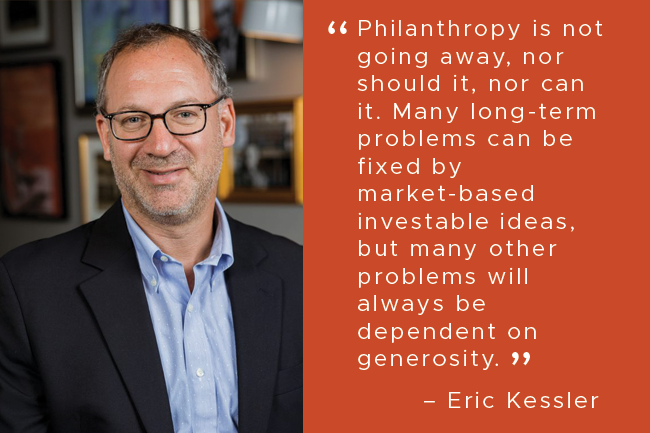Impact Investing as a Complement to Traditional Philanthropy

Earlier today, our founder Eric Kessler was featured in an article in the Financial Times alongside other leaders of organizations involved in impact investing and philanthropy. The article, “How Impact Investing Can Complement but not Displace Philanthropy,” notes that impact investing has become a bit of a buzzword in wealth management circles lately and that “wealthy individuals and foundations are drawn increasingly to impact investing to advance their social missions.” At the same time, the growth and expansion of impact investing is raising questions in philanthropy circles, where “some argue that impact investment does not always complement philanthropy and could even harm it.”
Speaking from Arabella’s unique perspective as an experienced advisor to both impact investors and traditional philanthropic grant makers, Eric notes that “philanthropy is not going away, nor should it, nor can it. Many long-term problems can be fixed by market-based investable ideas, but many other problems will always be dependent on generosity.” In fact, as the article helpfully goes on to explore, philanthropy and impact investing are both needed to address the many complex problems our society faces. And they can be deployed effectively as complementary strategies in many areas.
The impact investing team at Arabella works with clients who are proving this point every day, helping them leverage the power of their financial assets and drive social and environmental impact beyond their traditional philanthropic practice. For example, one of our clients is dedicated to animal rights and has been generously philanthropic in the sector for many years. Over the past two years, we have helped this client invest in early stage ventures that are developing market-based solutions to limit the use of animal products in our food supply chain. In a different area, we’re working with another client to address the inequality that’s currently inherent in support for early childhood health and education. This client has invested in educational technology companies and provided patient capital loans to support federally qualified healthcare centers to address such inequality and change the lives of children and their communities.
These are just two examples of how innovative philanthropists are expanding their arsenal of tools as we work together to solve some of the most pressing social and environmental challenges of our time. From our perspective, there are a few crucial takeaways to bear in mind here:
- Philanthropy need not be limited to traditional grant making. Effective tools for deploying other assets exist, and new ones continue to emerge every day.
- Asset owners can drive meaningful change with their investment dollars and our understanding of how that change is happening continues to improve.
- There are opportunities in impact investing at every place across the risk spectrum and in each asset class.
We appreciate the thoughtful coverage of this work in the Financial Times and elsewhere, and we look forward to continuing to work with our clients, here as elsewhere, to move from good ideas to meaningful, real-world impact.
To learn more about our impact investing team and services, visit this page or email us.
